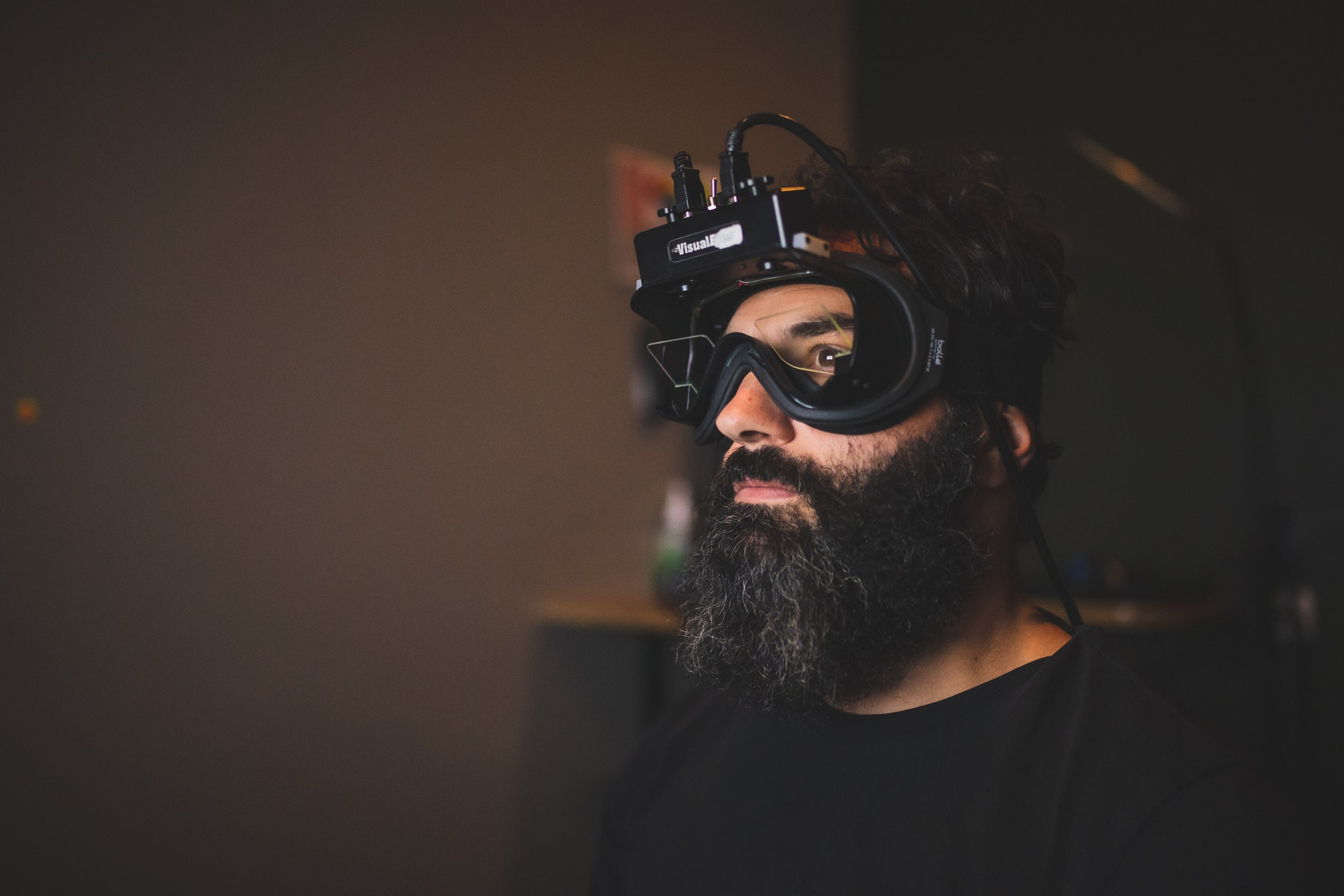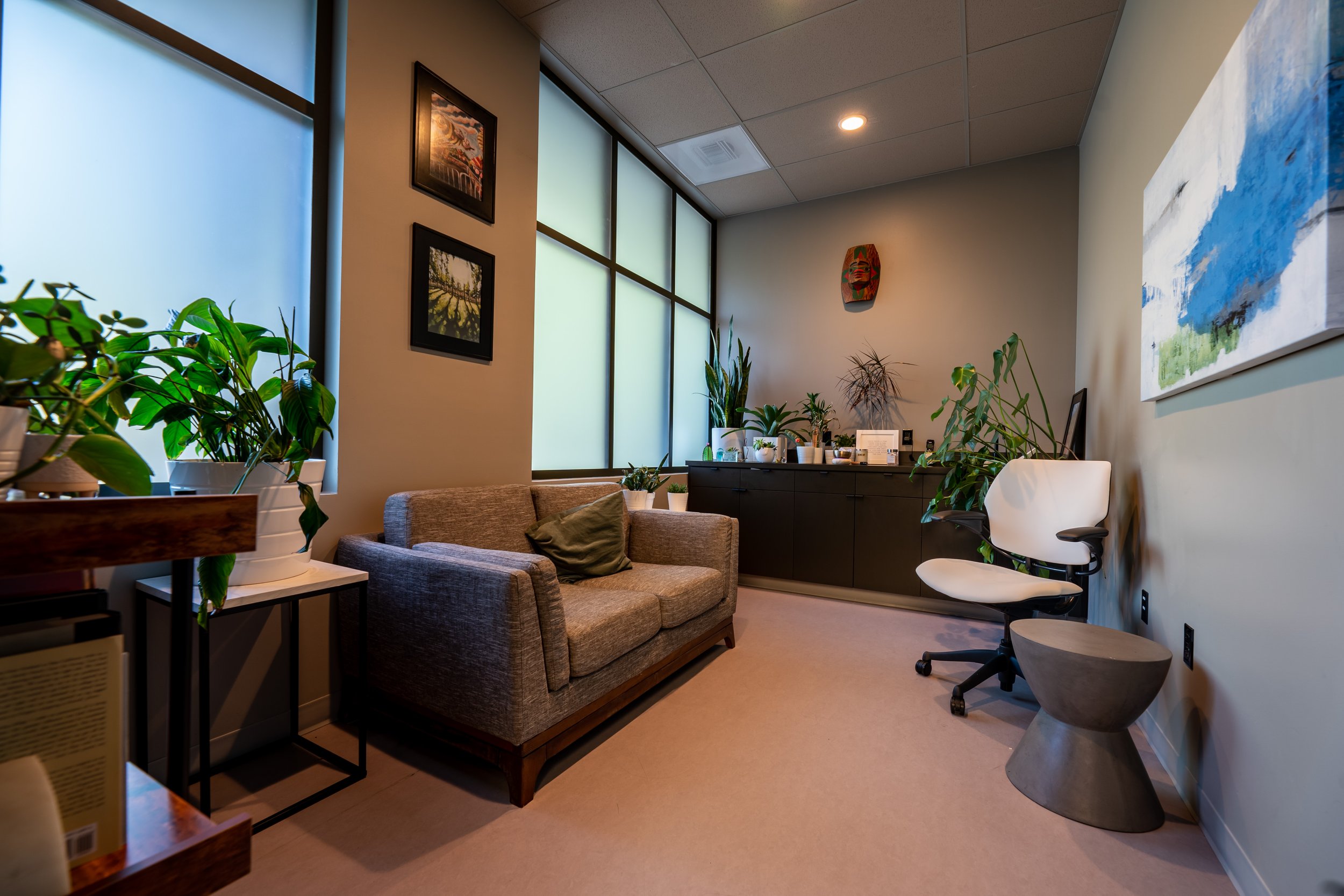
VIDEO-OCULOGRAPHY
WHAT IS VIDEO-OCULOGRAPHY? (VOG)
Video-Oculography, also known as Video Nystagmography, is advanced technology that allows us to record and precisely quantify eye movements. Impaired eye movements are an important part of the clinical picture in all manner of neurological conditions. Problems with eye movements can be found in concussions, traumatic brain injuries, vertigo, movement disorders, Alzheimer’s disease, Parkinson’s disease, neurodevelopmental disorders, and a myriad of other conditions. Proper objective analysis of eye movements is a critical part of your NeuroRescue program.
We use the Interacoustics Otoaccess system, the most advanced VOG system available. We are one of only a handful of Interacoustics software development sites in North America, along with Stanford University and the Mayo Clinic. We are working with Interacoustics to continuously develop new software and hardware specific to our diagnostics and therapies.
HOW DOES VOG HELP ME?
There are numerous classes of eye movements, and they work together to help you create a coherent picture of your visual world. While the same brainstem machinery generates all eye movements, different classes of eye movements are initiated and controlled by unique parts of the brain. Analysis of these movements helps us to determine which parts of the brain are working well, which systems are struggling, and what we need to do to make all of them work well again. Restoring normal eye movements is a foundational aspect of every NeuroRescue program. We see impaired eye movements in a host of conditions, including:
Traumatic Brain Injuries & Concussions | Dizziness & Vertigo | Cognitive Difficulties | Headaches & Migraines | Movement Disorders Neurodegenerative Disorders | Balance Difficulties | Neurodevelopmental Disorders | Mental Health Conditions
WHAT TO EXPECT:
VOG testing records your eye movements in response to a set of preprogrammed stimuli. You wear a set of goggles with sensitive infrared cameras that record and analyze your eye movements as you look at various targets moving on a screen. This gives us deep insight into what systems of your neurology are working, and what systems and pathways need help. It shows us under what conditions your brain fatigues and fails, and precisely what level of stimuli you require to rebuild function in your fragile systems. VOG shows us exactly what we need to do to create your unique NeuroRescue Program, so we can get back to living your best life as fast as possible.
FAQs
-
Yes. VOG testing is extremely safe. As we are evaluating the function of impaired neurological systems, the tests can be challenging and fatiguing for some individuals. Each test is only a minute or two long, with rest breaks in between when necessary.
-
Eye movements are generated from the brainstem, but are initiated and controlled by higher centers in the brain. Long, thin pathways run from the higher brain areas to the brainstem. These are sensitive to stretch and shearing forces in concussions and traumatic brain injuries. They can be impaired in neurodegenerative diseases, or damaged by strokes. They show specific patterns of dysfunction in movement disorders, vertigo, headaches, and cognitive disorders. A wide variety of central nervous system disorders can impact the production and control of eye movements. Impaired eye movements can be found in virtually all forms of central neurological disorders, and in many peripheral conditions as well.
-
VOG testing shows us how well you can use critical types of eye movements to make sense of your world. All of your eye movements are generated by a set of common neurological structures in the brainstem that drive eye muscles. There are several different classes of eye movements, and all of them are controlled by different parts of the brain. The ability to follow a moving target is controlled by an entirely different part of the brain from the ability to quickly jump between targets. The ability to hold eyes still on a target is similarly controlled by yet another part of the brain. Research shows direct links between impairments in eye movements and deficits in other motor, cognitive, and psychiatric functions that arise from these brain regions. Research also shows that rehabilitation of these eye movements can often lead to improvement in these associated functions.
VOG testing lets us see exactly how well all of these varied regions of the brain are working. Unlike neurodiagnostic imaging techniques such as MRI and CT scans, VOG is a functional test. It not only shows us how well these brain regions are functioning, but also lets us see under what conditions they may fatigue and fail. This gives us an enormous amount of information about what we need to do to get these regions all working well together again. VOG testing is a foundational aspect of every NeuroRescue Program.
-
Yes. We use advanced therapies and rehabilitation exercises to restore normal eye movement function, so you can find the world quickly and accurately, localize yourself within it, and respond to it effectively. Rehabilitation of eye movements is one of our most effective therapies in resolving neurological dysfunction, so we can get you back to living your best life as fast as possible.
LET’S GET YOU BACK TO LIVING YOUR BEST LIFE
“An incredible place with amazing people helping each and every person who walks in their door to recover and get back to their life.”

-
We use advanced neurodiagnostic technologies and cutting edge neurorehabilitation strategies that are unique to your brain and condition.
-
We use high frequency treatment over 5-10 days, to bring you maximum results in the shortest time possible.
